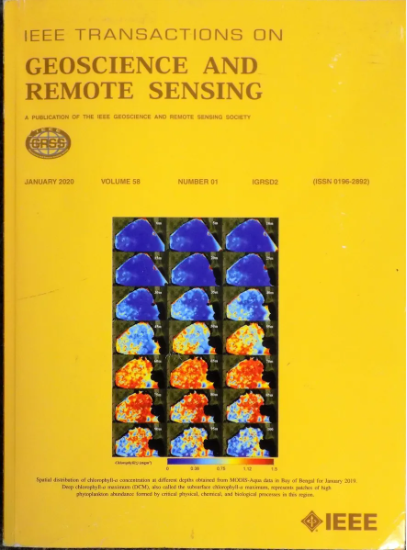Hyperspectral Object Tracking With Context-Aware Learning and Category Consistency
IF 8.6
1区 地球科学
Q1 ENGINEERING, ELECTRICAL & ELECTRONIC
IEEE Transactions on Geoscience and Remote Sensing
Pub Date : 2025-03-17
DOI:10.1109/TGRS.2025.3551724
引用次数: 0
Abstract
Hyperspectral imaging technology is of crucial importance to improve the performance of object tracking in many remote sensing surveillance areas. Previous methods primarily focused on feature fusion strategies by employing additional enhancement modules. However, these methods commonly lack contextual understanding to distinguish the target from the background and totally ignore the category information of the targets. To address these limitations, a novel hyperspectral object tracker is proposed to incorporate context-aware learning and category consistency tracker (CCTrack), which can adaptively learn context-aware representations in hyperspectral scenarios to obtain global target information with memory storage, while constructing an interframe category consistency constraint to enhance tracking process. Specifically, CCTrack integrates an adaptive context-aware learning (ACL) mechanism, which includes a feature decoupling module (FDM) to extract specific representations from decoupled features, and a Mamba layer to retain and update long-range dependencies. To align with prior knowledge of target recognition and motion patterns, an alignment transformation module (ATM) is employed with the ACL mechanism, fully leveraging spatial-spectral representations. In addition, category consistency constraint modules (C3Ms) are introduced to enforce category consistency across frames by computing the similarities between the target features and the corresponding category name, serving as the constraint to improve tracking performance. Extensive experiments over the hyperspectral object tracking (HOT) benchmark covering various remote sensing scenarios demonstrate that CCTrack outperforms state-of-the-art methods by a significant margin.基于上下文感知学习和类别一致性的高光谱目标跟踪
在许多遥感监测领域,高光谱成像技术对提高目标跟踪性能至关重要。以前的方法主要集中在特征融合策略上,采用额外的增强模块。然而,这些方法通常缺乏上下文理解,无法区分目标和背景,完全忽略了目标的类别信息。针对这些局限性,提出了一种结合上下文感知学习和类别一致性跟踪器(CCTrack)的高光谱目标跟踪器,该跟踪器可以自适应学习高光谱场景下的上下文感知表示,以获取具有内存存储的全局目标信息,同时构建帧间类别一致性约束以增强跟踪过程。具体来说,CCTrack集成了自适应上下文感知学习(ACL)机制,其中包括一个特征解耦模块(FDM),用于从解耦的特征中提取特定的表示,以及一个Mamba层,用于保留和更新远程依赖关系。为了与目标识别和运动模式的先验知识对齐,在ACL机制中使用了对齐转换模块(ATM),充分利用了空间光谱表示。此外,引入类别一致性约束模块(c3m),通过计算目标特征与相应类别名称之间的相似度来强制跨帧的类别一致性,作为约束来提高跟踪性能。在涵盖各种遥感场景的高光谱目标跟踪(HOT)基准上进行的大量实验表明,CCTrack在很大程度上优于最先进的方法。
本文章由计算机程序翻译,如有差异,请以英文原文为准。
求助全文
约1分钟内获得全文
求助全文
来源期刊

IEEE Transactions on Geoscience and Remote Sensing
工程技术-地球化学与地球物理
CiteScore
11.50
自引率
28.00%
发文量
1912
审稿时长
4.0 months
期刊介绍:
IEEE Transactions on Geoscience and Remote Sensing (TGRS) is a monthly publication that focuses on the theory, concepts, and techniques of science and engineering as applied to sensing the land, oceans, atmosphere, and space; and the processing, interpretation, and dissemination of this information.
 求助内容:
求助内容: 应助结果提醒方式:
应助结果提醒方式:


